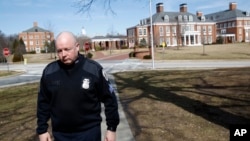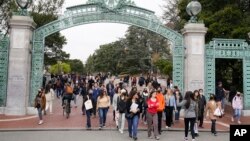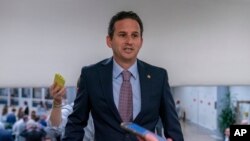Student Union
- By Amanda Scott
Student and Teacher Scientists to March for Science in DC

The march responds to proposed budget cuts by U.S. President Donald Trump to federal agencies focused on sciences like environment and health. That budget would eliminate 56 programs at the Environmental Protection Agency. The cuts would drastically reduce funding for the agency’s Office of Research and Development and Science Advisory Board.
The budget also proposes $6 billion in cuts to the National Institute of Health (NIH), the largest public funder of biomedical research funding in the world. NIH is the largest institution for biomedical science on earth. NIH includes 1,200 "principal investigators"and 4,000 post-doctoral fellows. It also includes the National Library of Medicine, a resource for researchers around the world, and the NIH Clinical Center, the world’s largest clinical research hospital designed to bridge laboratory work, patient studies and bedside cures, according to the NIH website.
The National Science Teachers Association (NSTA) issued a statement saying they encourage their 55,000 members worldwide to push back against actions to dilute scientific integrity and transparency, such as questions about the validity of climate change.
“As teachers, we must stand with our colleagues to support the fundamental value of science in our society and help people to understand and appreciate scientific knowledge, the importance of fact-based evidence that is exemplified by science, and the need for all children to have a quality science education,” NSTA said in a statement.
High-school student Anya Tassy of Fairborn, Ohio, says she plans to be among the estimated 150,000 marchers who want their voices heard.
“I want to contribute to making science a priority and not having it used to discredit things that have already been proven,” she says.
“People who value science have remained silent for far too long in the face of policies that ignore scientific evidence and endanger both human life and the future of our world,” March for Science organizers said in a statement posted to their website.
“Anti-science agendas and policies have been advanced by politicians on both sides of the aisle, and they harm everyone.”
The march is held on Earth Day, which started in 1970.
"Thousands of colleges and universities organized protests against the deterioration of the environment," says EarthDay.org. "Groups that had been fighting against oil spills, polluting factories and power plants, raw sewage, toxic dumps, pesticides, freeways, the loss of wilderness, and the extinction of wildlife suddenly realized they shared common values."
The march is billed as a non-partisan event. Organizers say it is the first step in a global movement to acknowledge and defend the “vital role science plays in lives,” say march organizers.
"Scientists prefer not to get involved in politics," said environmental scientist Benjamin Cuker to the Daily Press in Virginia. "But the current wave of anti-science flooding out of the federal government must be answered by scientists, themselves. We can't expect any other sector of society to stand up for science if we as scientists fail to do so."
Cuker, a professor of marine and environmental studies at Hampton University, says he and his wife, a middle school STEM teacher, and another colleague plan to march in Washington on Saturday.
The Earth Day network, which is co-organizing Saturday’s march, says it “will focus on the need to hold our leaders -– both in science and in politics -– accountable to the highest standards of honesty, fairness, and integrity.”
Similar demonstrations are expected to be held in more than 600 cities across the world including Seoul, Madrid, London and Cape Town.
Please leave a comment here, and visit us on Facebook, Twitter, Instagram and LinkedIn, thanks!
See all News Updates of the Day
Universities in Middle East building research relationships with China

As China bolsters research relationships with universities in the Middle East, the United States has taken notice – especially when that research involves artificial intelligence.
Reporting for University World News, Yojana Sharma has the story. (March 2024)
Tips for staying safe while studying in the US

Recent news events have raised safety concerns among some international students studying in the United States.
Adarsh Khandelwal, writing in the India Times, has tips for staying safe from the moment you arrive until the day you complete your studies. (March 2024)
Some colleges are making digital literacy classes mandatory

A 2019 study by Stanford found that most college students can’t tell the difference between real and fake news articles. Amid rampant online disinformation, and the threat of AI-generated images, some schools are making students learn “digital literacy” to graduate.
Lauren Coffeey reports for Inside Higher Ed. (March 2024)
With federal student aid delays, students aren’t sure what college will cost

The U.S. Department of Education’s federal student aid form (FAFSA) experienced serious glitches and delays this year.
Now, many students have been admitted to college, but don’t know how much money they’ll need to attend.
Read the story from Susan Svrluga and Danielle Douglas-Gabriel for The Washington Post. (March 2024)
Senator draws attention to universities that haven’t returned remains

More than 70 U.S. universities continue to hold human remains taken from Native American burial sites, although those remains were supposed to be returned 30 years ago.
Jennifer Bendery writes in Huffington Post that one senator has been using his position in an attempt to shame universities into returning remains and artifacts. (April 2024)






